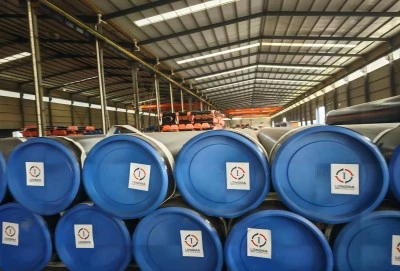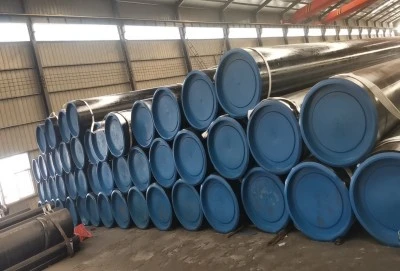When it comes to welded pipes used in the oil and gas industry, the API 5L standard is a crucial specification that ensures the quality and reliability of these essential components. Within this standard, two Product Specification Levels (PSL) exist: PSL1 and PSL2. Understanding the differences between these two levels is vital for anyone involved in pipeline projects or procurement of welded pipes. In this comprehensive guide, we'll explore the key distinctions between PSL1 and PSL2 in API 5L welded pipes, helping you make informed decisions for your next project.
|
|
|
What are the basic differences between PSL1 and PSL2 in API 5L welded pipe?
API 5L welded pipes are categorized into two Product Specification Levels: PSL1 and PSL2. These levels differ in terms of their requirements, applications, and overall quality standards. PSL1 is considered the basic level, while PSL2 has more stringent requirements and is typically used for more demanding applications.
The primary differences between PSL1 and PSL2 can be summarized as follows:
- Manufacturing Process: PSL2 pipes undergo a more rigorous manufacturing process with stricter controls compared to PSL1 pipes.
- Chemical Composition: PSL2 pipes have tighter restrictions on chemical composition, particularly regarding elements like carbon, phosphorus, and sulfur.
- Mechanical Properties: PSL2 pipes generally have higher strength requirements and tighter tolerances for mechanical properties.
- Testing Requirements: PSL2 pipes are subject to more extensive testing procedures, including additional non-destructive testing.
- Documentation and Traceability: PSL2 pipes require more comprehensive documentation and traceability throughout the manufacturing process.
These differences make PSL2 pipes more suitable for critical applications where safety and reliability are paramount, such as offshore pipelines or high-pressure transmission lines. PSL1 pipes, while still meeting high-quality standards, are more commonly used in less demanding applications or where cost considerations are a significant factor.
How do the chemical composition and mechanical properties differ in PSL1 and PSL2?
The chemical composition and mechanical properties of API 5L welded pipes play a crucial role in determining their performance and suitability for various applications. Let's delve into the specific differences between PSL1 and PSL2 in these areas:
Chemical Composition
PSL2 pipes have more stringent requirements for chemical composition compared to PSL1 pipes. This is particularly evident in the following areas:
- Carbon Equivalent (CE): PSL2 pipes have a lower maximum CE value, which improves weldability and reduces the risk of cold cracking.
- Phosphorus and Sulfur Content: PSL2 pipes have lower maximum limits for these elements, which helps improve toughness and reduce the risk of inclusions.
- Microalloying Elements: PSL2 pipes often have tighter controls on elements like niobium, vanadium, and titanium, which are used to enhance strength and toughness.
For example, in grade X52 pipes, the maximum carbon content for PSL1 is 0.28%, while for PSL2 it's reduced to 0.22%. Similarly, the maximum phosphorus content for PSL1 is 0.030%, while for PSL2 it's lowered to 0.025%.
Mechanical Properties
The mechanical properties of PSL2 pipes are generally superior to those of PSL1 pipes, with tighter tolerances and higher minimum requirements:
- Yield Strength: PSL2 pipes often have higher minimum yield strength requirements, ensuring better performance under pressure.
- Tensile Strength: The ratio between yield strength and tensile strength is more tightly controlled in PSL2 pipes, ensuring a better balance of strength and ductility.
- Elongation: PSL2 pipes typically have higher minimum elongation requirements, indicating better ductility and formability.
- Toughness: PSL2 pipes are subject to more rigorous toughness testing, including Charpy V-notch impact tests, ensuring better performance in low-temperature environments.
For instance, in X52 grade pipes, the minimum yield strength for both PSL1 and PSL2 is 360 MPa. However, PSL2 pipes have a tighter range for tensile strength (455-620 MPa) compared to PSL1 (455 MPa minimum).
These enhanced chemical and mechanical properties make PSL2 pipes more suitable for critical applications where performance and safety are of utmost importance. However, it's important to note that PSL1 pipes still meet high-quality standards and are suitable for many applications where the additional requirements of PSL2 are not necessary.
What are the testing and quality control requirements for PSL1 vs. PSL2?
The testing and quality control requirements for API 5L welded pipes differ significantly between PSL1 and PSL2, with PSL2 having more stringent and comprehensive requirements. These differences ensure that PSL2 pipes meet higher standards of reliability and performance. Let's examine the key distinctions in testing and quality control:
1.Non-Destructive Testing (NDT)
PSL2 pipes are subject to more extensive NDT requirements compared to PSL1:
- PSL1: Requires basic NDT, typically including visual inspection and hydrostatic testing.
- PSL2: In addition to PSL1 requirements, PSL2 pipes must undergo full-body ultrasonic or electromagnetic inspection to detect potential defects in the pipe body and weld seam.
For example, in the case of ERW (Electric Resistance Welded) pipes, PSL2 requires 100% ultrasonic inspection of the weld seam, while this is not mandatory for PSL1.
2.Mechanical Testing
Both PSL1 and PSL2 require mechanical testing, but PSL2 has additional requirements:
- PSL1: Typically requires tensile testing and flattening tests for welded pipes.
- PSL2: In addition to PSL1 requirements, PSL2 often includes:
- Charpy V-notch impact testing to assess low-temperature toughness
- Drop weight tear testing for larger diameter pipes
- Hardness testing to ensure consistency of mechanical properties
3.Chemical Analysis
Both PSL1 and PSL2 require chemical analysis, but PSL2 has more stringent requirements:
- PSL1: Requires a basic chemical analysis of the steel used in pipe production.
- PSL2: Requires more comprehensive chemical analysis, including product analysis in addition to heat analysis. This ensures that the final product meets the specified chemical composition requirements.
4.Documentation and Traceability
PSL2 pipes require more extensive documentation and traceability compared to PSL1:
- PSL1: Basic documentation of test results and material properties is required.
- PSL2: Requires comprehensive documentation, including:
- Detailed manufacturing procedure specifications
- Full traceability of materials from steel production to final pipe
- Comprehensive test reports for all required tests
- Documentation of any repairs made during production
This enhanced documentation and traceability for PSL2 pipes ensure that every step of the manufacturing process can be verified and audited if necessary.
5.Quality Control System
While both PSL1 and PSL2 require quality control systems, PSL2 has more stringent requirements:
- PSL1: Requires a basic quality control system to ensure compliance with API 5L standards.
- PSL2: Requires a more comprehensive quality management system, often including:
- ISO 9001 certification or equivalent
- More frequent and rigorous internal audits
- Enhanced process control and monitoring
- Stricter requirements for personnel qualification and training
These enhanced quality control measures for PSL2 pipes help ensure consistently high quality and reliability, which is crucial for critical applications in the oil and gas industry.
API 5L Welded Pipes
Understanding the differences between PSL1 and PSL2 in API 5L pipes is crucial for making informed decisions in pipeline projects. While both levels meet high-quality standards, PSL2 pipes offer enhanced chemical composition, superior mechanical properties, and more rigorous testing and quality control requirements. This makes PSL2 pipes particularly suitable for critical applications where safety, reliability, and performance are paramount.
However, it's important to note that the choice between PSL1 and PSL2 should be based on the specific requirements of your project. PSL1 pipes still meet high-quality standards and may be suitable for many applications where the additional requirements of PSL2 are not necessary. Factors such as operating conditions, regulatory requirements, and cost considerations should all be taken into account when making your decision.
At LONGMA GROUP, we offer a wide range of API 5L welded pipes in both PSL1 and PSL2 specifications. Our expert team can help you determine the best option for your specific needs, ensuring you get the right balance of performance, reliability, and cost-effectiveness. Whether you're working on a small-scale project or a large industrial venture, we have the expertise and products to meet your requirements.
Ready to find the perfect API 5L pipe for your next project? Don't hesitate to reach out to us at info@longma-group.com. Let's discuss how our high-quality pipes can contribute to the success of your pipeline project.














